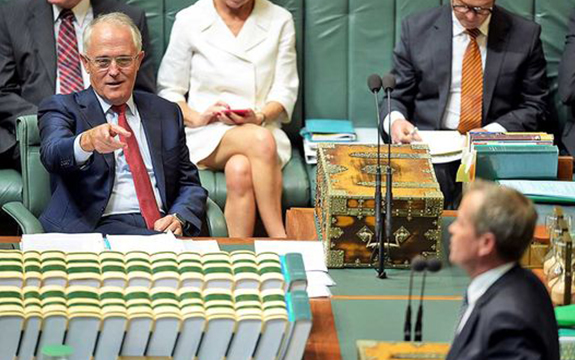Fifty–fifty vision: the pollsters’ preference problem

In Summary
- Analysis for Inside Story, by Swinburne Adjunct Research Fellow Peter Brent
What to make of today’s Newspoll, which has the parties level after preferences at 50 per cent each? It follows a closer-than-usual 52–48Ipsos poll in Fairfax papers last week and a general narrowing since late last year.
Newspoll has already rippled around ABC radio and the rest of the media. Unfortunately for the government, parliament is sitting this week, and each element of politics will be interpreted through the prism of Labor’s apparent surge and momentum. Everything Malcolm Turnbull and Scott Morrison said and did over the last fortnight will be reanalysed and found even more wanting. Bill Shorten will be depicted as a man of stature, conviction and wit.
Try as they might, politicians can’t ignore the political media’s obsessions. And all from a couple of imprecise measurements of people’s responses to a question based on the crazy hypothetical that an election was held last weekend. Australian politics is facile that way – and yes, the existence of this article indicates I’m part of the problem.
One unknown with all these polls, which won’t be revealed until the election, is the reliability of preference allocations based on flows at the last election, in 2013. That’s how the pollsters estimate their two-party-preferred numbers. The 2013 poll was characterised by three unusual things: the Palmer United Party, which seemed to come out of nowhere; a low vote for independents; and an overall independent preference flow that favoured Labor. The latter was primarily due to the results in Denison (from Andrew Wilkie) and Indi (from Cathy McGowan). And PUP has all but disappeared.
Continue reading the article on Inside Story.
Written by Peter Brent, Adjunct Research Fellow, Swinburne Institute of Technology.

